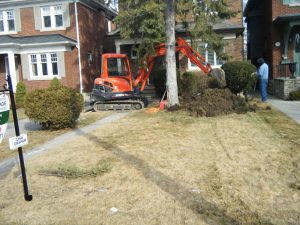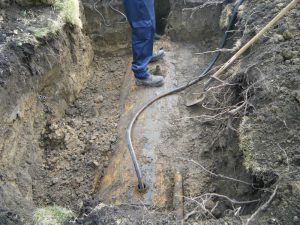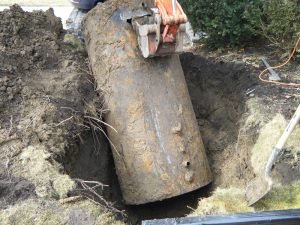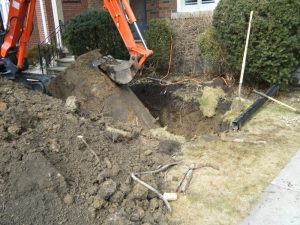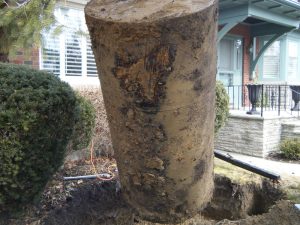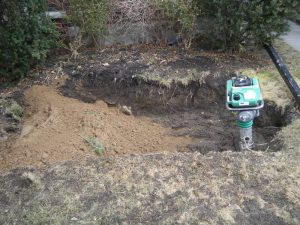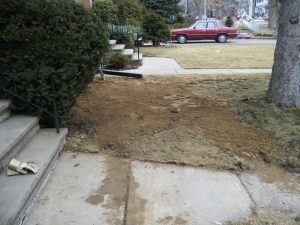Waterline has been providing Residential Oil Tank Removal services for over 20 years.
We help home owners through the process of removing and updating their existing residential underground oil tanks. If you suspect that there is a buried fuel tank on your property, you will not know whether it is leaking until it is removed. Therefore, the longer you wait before having your heating oil tank removed the more likely there is contamination, increasing the potential for costly clean-up.

Don’t Wait For a Costly Clean-Up!
If you require residential oil tank removal services, contact the certified professionals at Waterline Environmental today. We will provide you with a firm quote and keep you informed during the entire oil tank removal process. It is important to get a trained professional to assess your residential oil tank removal to ensure safety and proper disposal.
Some important points to remember about underground oil tank removal
- All residential oil tanks must be inspected and tested and oil cannot be obtained until the tank has been registered.
- Effective October 2001, the New Energy Act introduced legislation that requires the removal of oil tanks that exceed 25 years or of unknown age. A fuel supplier is not allowed to fill a tank which falls into this category and therefore the homeowner will no longer be able to obtain fuel in their existing tank.
- The gas handling act states that upon disuse of an oil tank, the owner has 180 days to de-commission the tank and empty it of fuel.
The Residential Oil Tank Removal Process
Our process consists of the following steps:
- Site visit to determine tank location
- Provide a firm quotation in writing for the tank removal
- All service locates are done by Waterline prior to excavation
- We will hand-dig to confirm services that may be close to the underground oil tank (hydro, gas, etc.)
- Excavate over the tank and store soil on site for backfill
- Cut open the tank and remove all remaining liquid and sludges
- Remove the tank from the ground and inspect for corrosive failure
- A Professional Geoscientist will be on site to observe the removal and secure soil samples for lab analysis
- Backfill the tank nest with excavate and clean soils
- Dispose of the tank and associated piping to a registered recycler
- Remove fill and vent from the building perimeter
- Remove supply and return piping from inside the house and patch with quick set concrete
- Leave the site in a clean and orderly fashion
- A final report is signed by the attending P.Geo all to MOE&E, CSA and TSSA code requirements
